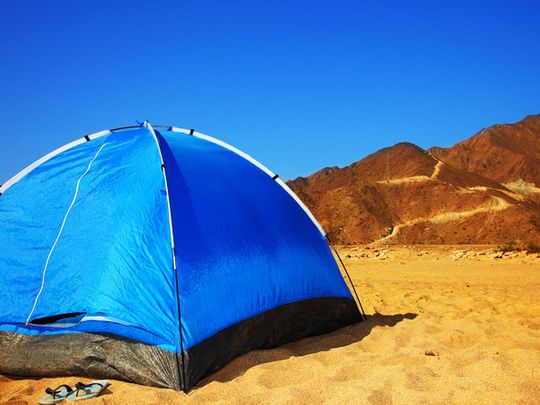Dubai: The UAE is home to an abundance of natural beauty and plenty of things to do, especially during the winter months. Each of the seven emirates has its own unique gems, whether they are beaches, mountains, desserts or hundred-year-old forts. Sheikh Mohammed Bin Rashid Al Maktoum, Vice President and Prime Minister of UAE and Ruler of Dubai, approved the new UAE Strategy for Domestic Tourism that encourages residents to explore in their own backyards.
The campaign, dubbed, ‘World’s Coolest Winter’ prompts residents and citizens to explore the hidden gems of seven emirates. The 45-day event, overseen by the Ministry of Economy in collaboration with local tourism entities and supported by the UAE Government Media Office, aims to highlight the major landmarks and attractions that distinguish each emirate and contribute to the UAE as a single destination. The new campaign not only aims to boost domestic tourism but will also attract people to take advantage of attractive offers to enjoy the best winter in the world.
It’s time to go exploring…
If you love a rocky terrain
Fossil Rock
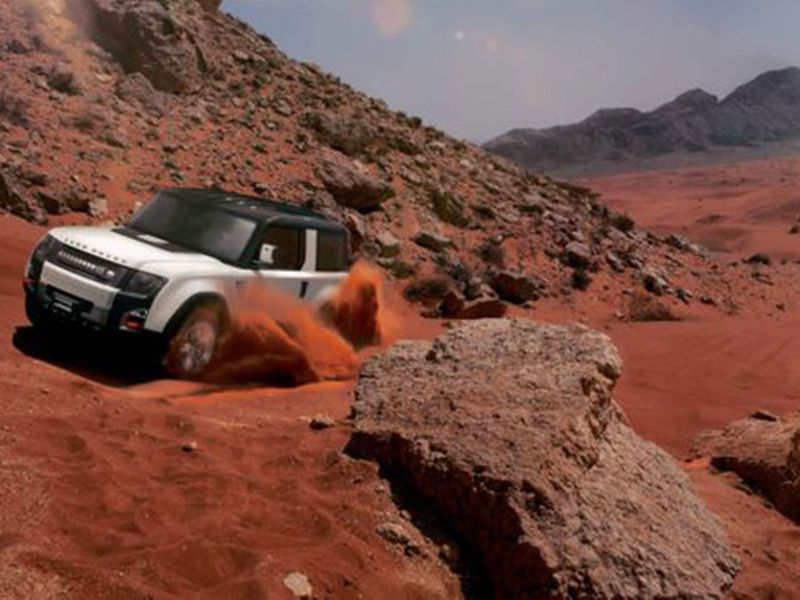
Why you should visit: Heading out of Sharjah city towards Kalba will bring you to this spectacular point, officially called Jebel Maleihah. It is more widely popular as fossil rock. The beauty of this point is that marine fossil can be found here. Millions of years ago much of Arabia was under the ocean – the Tethys Ocean to be precise. Fossil Rock is simply beautiful. Many of the fossils there are said to be over 80 million years old. To get there you need to drive down the Dubai-Hatta road through to Al Awir. Once you arrive at Fossil Rock, take a moment to sit among fossils that are over millions of years old, enjoy clear blue skies, rocky hills and pristine desert sand in one of the UAE’s natural wonders.
Where: Sharjah, 25.14215750623173, 55.833796239758954
Cost: Free
Wadi Aasimah
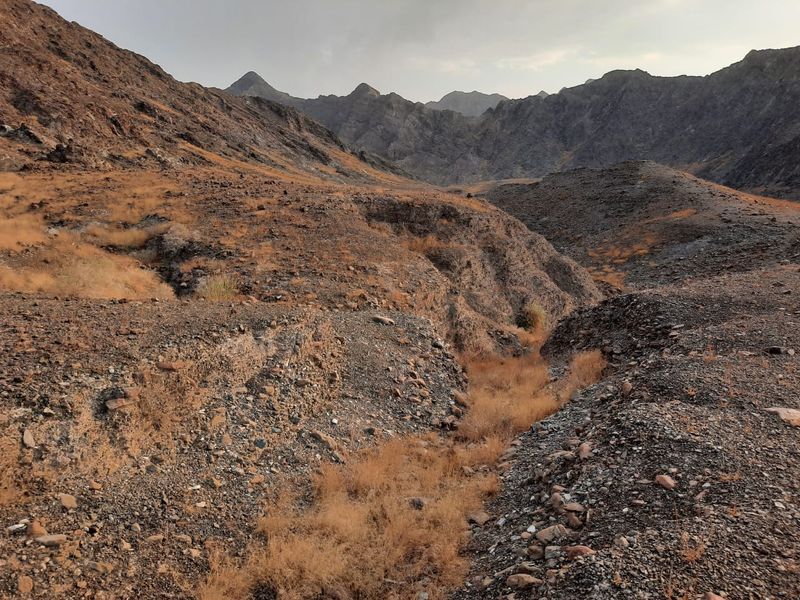
Why you should visit: It’s a superb, 16.8km off-road track. From the village of Al Ghail, this route goes through secluded villages, small pools, greenery. The off road track meanders between falaj’s and dams – all on a solid rock bed. Drive till you reach Aasimah on the other end of the 16.8km track. You need a 4WD vehicle.
Where: Ras Al Khaimah, 25.416001825998865, 56.10058342332582
Cost: Free
Wadi Al Bih
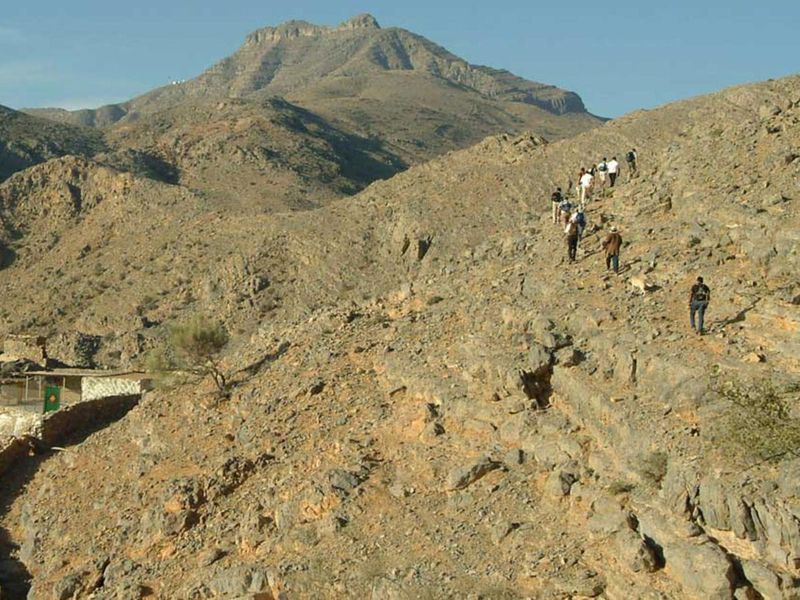
Why you should visit: Affectionately known as the Grand Canyon of the UAE, Wadi Bih is a deep ravine with a distance of 1 kilometre. The top of the wadi gives you some of the best views of the UAE. The whole thing spans from the Ras Al Khaimah clock tower all the way near the UAE border checkpoint. You can start your trip by exploring the National Museum of RAK or even soak up some sun on the beaches of Dibba. You can set up camp in Wadi Bih itself. Remember to check the weather before heading out there, because you don’t want to be caught in a wadi during a flash flood. Try and set up camp at a higher elevation in the Hajar Mountains, and do pack a cushy sleep bag because the rocks can prove to be killers for your back.Visitors of Wadi Al Bih can go hiking, mountain biking and camping in the area. Wadi al Bih also has some very interesting sights nearby such as the infamous deserted villages of RAK, other smaller wadi areas and some unexpected amount of natural greenery as well as gorgeous views of a great outdoors that we don’t get to experience much while living in the city
You can start your trip by exploring the National Museum of RAK or even soak up some sun on the beaches of Dibba.You can set up camp in Wadi Bih itself. Remember to check the weather before heading out there, because you don’t want to be caught in a wadi during a flashflood. Try and set up camp at a higher elevation in the Hajar Mountains, and do pack a cushy sleep bag because the rocks can prove to be killers for your back.
Where: Ras Al Khaimah, 25.81758920962426, 56.15298963848324
Cost: Free
Wadi Ghalilah
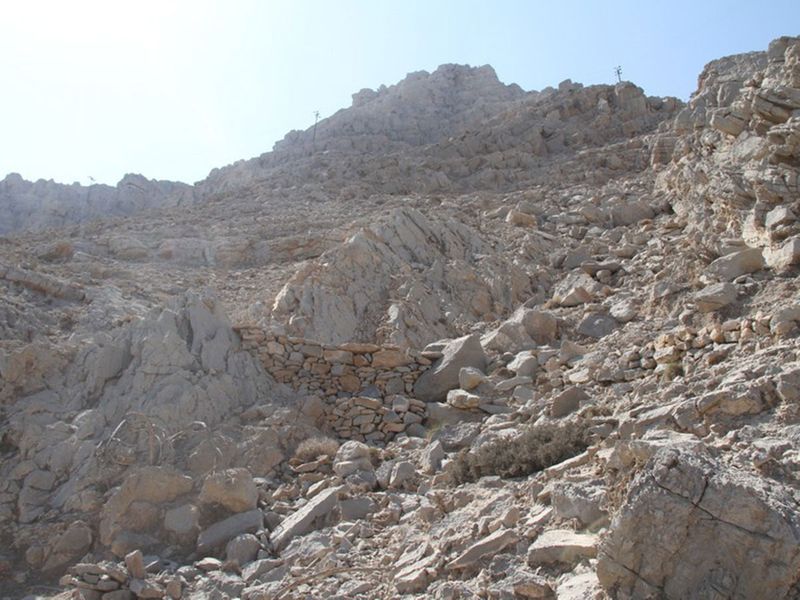
Why you should visit: This beautiful wadi is a favourite spot for many rock climbers. Located two hours out of Dubai, Wadi Ghalilah is quite close to Ras al Khaima’s coastline. It is known to be smaller and less extensive than Wadi Bih, but has many steeper rocks and cliffs. The wadi also has quite a low altitude and because it is so close to water, the humidity and heat make it quite difficult to trek. Stairway to heaven is the name of one of the wadi’s more dangerous mountains. It stands at a high 1.9 kilometres and is not recommended to climb without someone who is really familiar with the mountain. Additionally, many experienced climbers have alleged that the climb is quite physically and emotionally unnerving.
Where: Ras Al Khaimah, 25.985525653323972, 56.075934774305594
Cost: Free
Wadi Naqab

Starting at Wadi Shawka or Shawka valley, where you can feel a cold breeze, you walk past fragrant palm trees, flowers and plants, and move on to Wadi Al Layat, Wadi Al Munai, Wadi Naqab and Wadi Al Zaytoon.
Wadi Shawka showcases the beauty of nature through its charming environment, mountains and gardens, as well as the plants that decorate the summit of Al Sahab, which allows adventurers to hike the mountain while enjoying nature.
WAM
Why you should visit: The rugged terrain of Ras Al Khaimah’s mountain range that stretches into Oman is a weekender’s delight — and nightmare, if the weather forecast is not taken into consideration. While a number of wadis are crying to be explored, but Wadi Naqab holds a personal place in our hearts for offering a bit of everything, also catering to those travelling with young ones in the backseat. There are also several hiking trails for those looking for that added bit of adventure. But keep in mind, the area is prone to flash flooding so do take in the weather before heading out on a trail. Veterans on the trail will be able to tell you of a hike that takes you past a bat cave.
Location: Ras Al Khaimah, 25.70384,56.0662
Cost: Free
Hatta
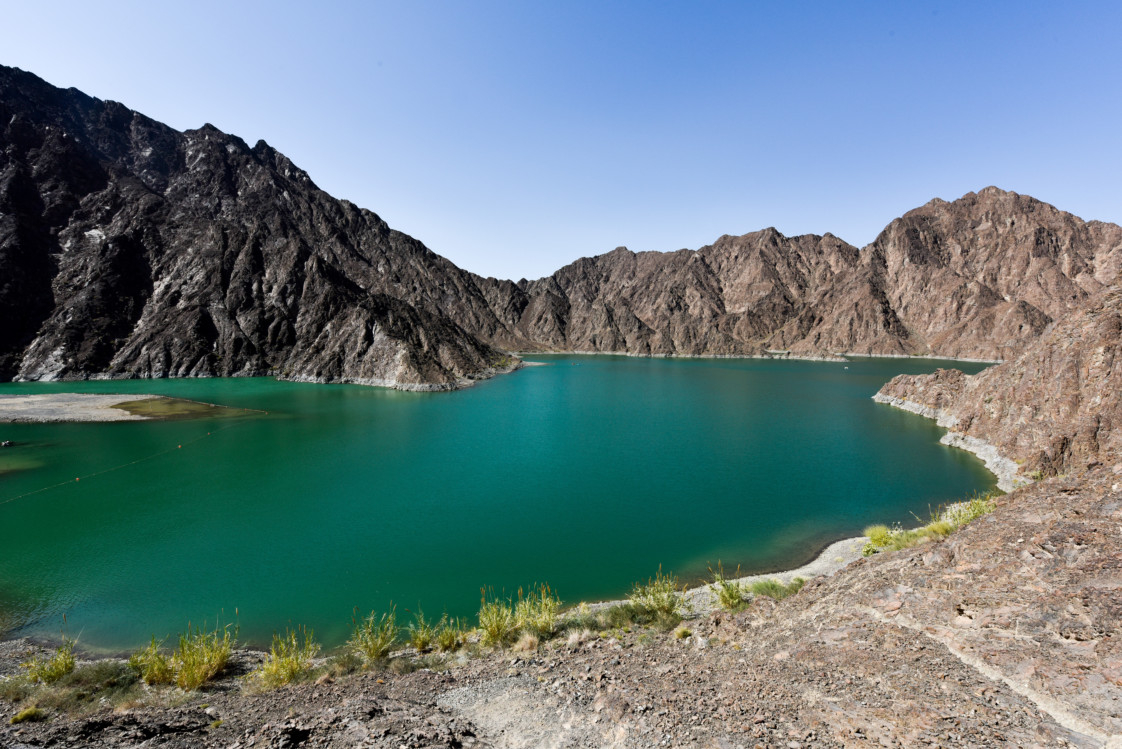
Image Credit: GN Archives
Why you should visit: Hatta is the perfect getaway from the city lights, providing an opportunity to get back to nature as well as to experience a wide range of activities. You could go mountain biking or hiking in the Hajar Mountains – also known for its stunning views – or enjoy wadi-bashing in the riverbeds and even go kayaking in the Hatta Dam. The Hatta Wadi Hub offers visitors experiences such as a 10-metre high climbing wall that includes five lanes, a slingshot that propels those looking for adventure, fun and suspense to a height of up to 50 meters, and paragliding.
Where: Dubai, 24.789697065050316, 56.119514087516066
Cost: Free
Masfout
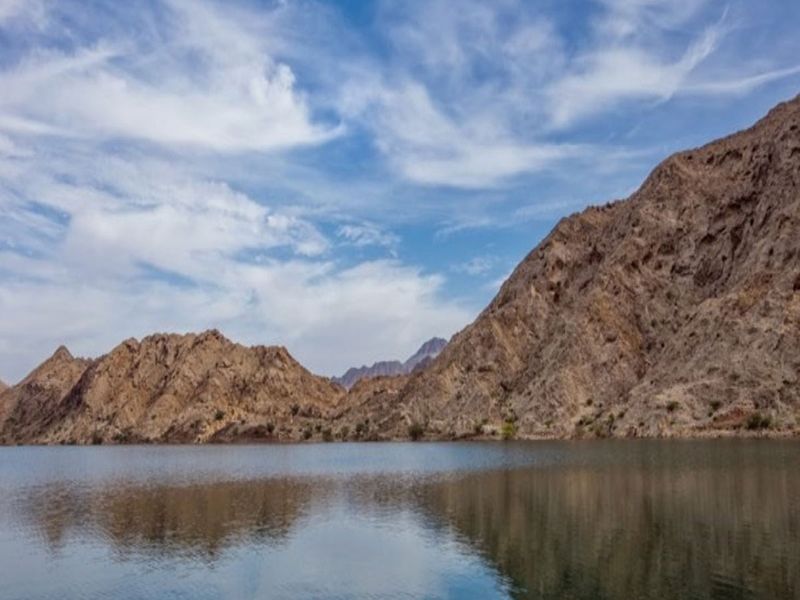
Why you should visit: Ajman, the smallest emirate in the UAE is a surprisingly refreshing escape from the city bustle and heat. Masfout is one of the city’s 2 hours outside of Ajman is a favourite local escape and a beautiful summer retreat. Because the area is at a higher altitude and at a nice two hour distance from the city center, there’s cooler climates a pollution free fresh breeze. Ajman’s unexpected rocky countryside is a perfect spot for walking, mountain biking, picnics and wadi exploration. The robust setting has some beautiful flora and fauna and before the city was built used to be home to leopards, gazelles and foxes. The area has no tourism yet, as there are no hotels in Masfout yet, so now may be the best chance to check these places out.
Location: Ajman, 24.81636680064756, 56.09703684514431
Cost: Free
Jebel Jais
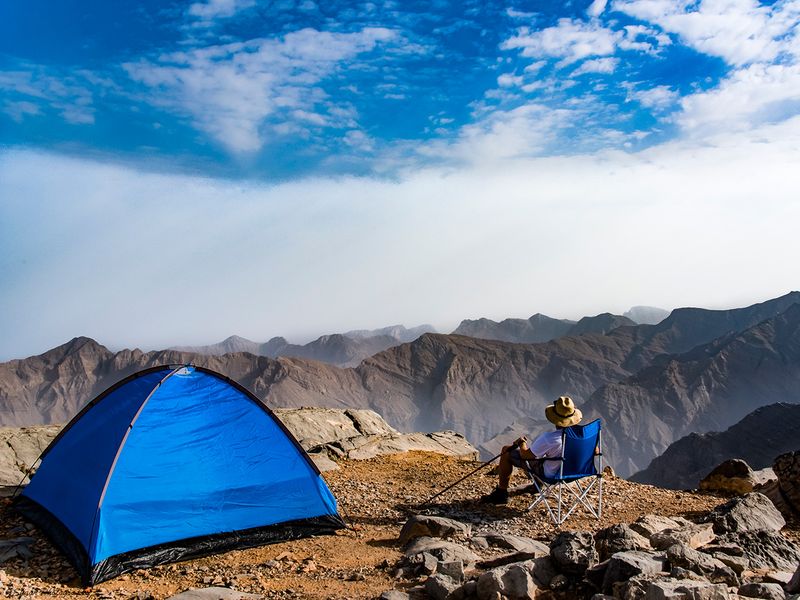
Image Credit: Ghadir Shaar/Gulf News reader
Why you should visit: One of the UAE’s highest peaks, Jebel Jais is part of the Hajar mountains that were formed over 70 million years ago in the eastern part of Ras Al Khaimah and Oman. Towering at 1,934 meters above sea level, Jebel Jais has amazing views, thrilling adventures, and a welcome respite from the heat with temperatures around ten degrees cooler than sea level. The park’s cultural and natural features are one of the cultural sites of Al Ain that make up the UAE’s first designated UNESCO World Heritage Site. The park is operated by Barari Natural Resources, the environmental management organisation that conserves and manages forests and nature reserves across the emirate of Abu Dhabi, including Sir Bani Yas Island and Telal Resort. There are a number of fun things to do in Jebel Hafeet Desert Park. Whether you like to explore the desert on wheels, on foot or the traditional way – on a camel.
Location: Ras Al Khaimah, 25.954559398387044, 56.18371718371678
Cost: Free
Jebel Hafeet Desert Park
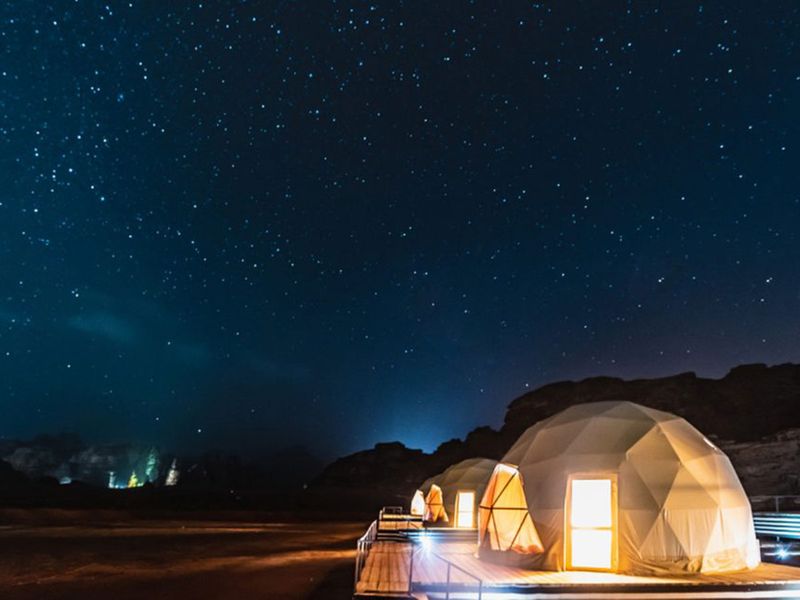
Why you should visit: Al Ain’s Jebel Hafeet Desert Park is one of Abu Dhabi’s newest cultural and outdoor adventure attractions. Located at the foot of Jebel Hafeet Mountain, the park offers guests a mix of history, culture, and stunning natural landscapes. The park’s cultural and natural features are one of the cultural sites of Al Ain that make up the UAE’s first designated UNESCO World Heritage Site. The park is operated by Barari Natural Resources, the environmental management organisation that conserves and manages forests and nature reserves across the emirate of Abu Dhabi, including Sir Bani Yas Island and Telal Resort. There are a number of fun things to do in Jebel Hafeet Desert Park. Whether you like to explore the desert on wheels, on foot or the traditional way – on a camel.
Location: Abu Dhabi, 24.044473021228047, 55.836862026987816
Cost: Dh350 to access the public campsite, Dh500 for a night in the tent
Wadi Showka
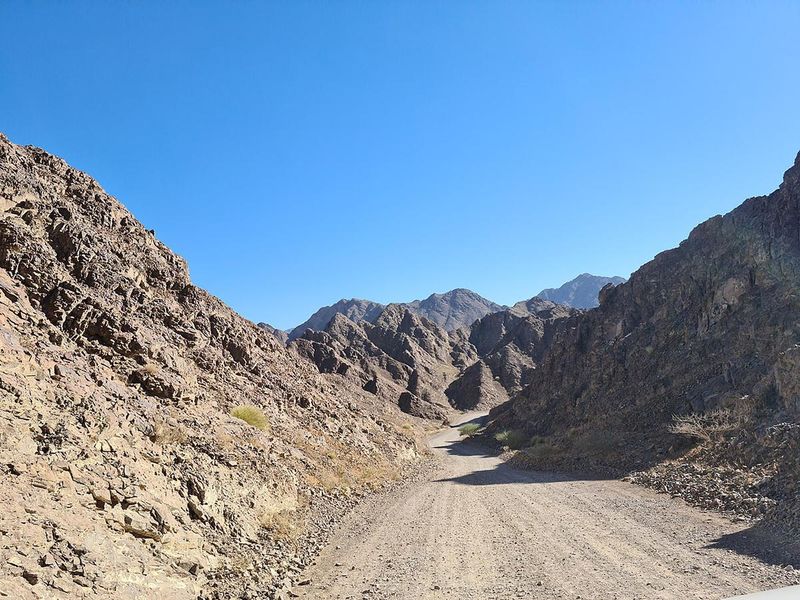
Why you should visit: Located just 45 minutes away from Dubai, Wadi Showka has become a popular spot for many UAE residents looking to escape the bustle of the city. You can go hiking in the mountains, biking on certain trails as well as a kids’ playground, and the Shawka dam. Currently open for tourists with some facilities. Wadi Shawka is the ideal family recreational and picnic location. A dam was built following the instructions of the late Shaikh Zayed Bin Sultan Al Nahyan in 2001. At 120mm, Wadi Shawka receives one of the highest rainfalls in the country and the dam helps harvest rainwater.
Location: Ras Al Khaimah, 25.134655936788846, 56.04162185423917
Cost: Free
Jebel Hafeet’s “Beehive cemetery”
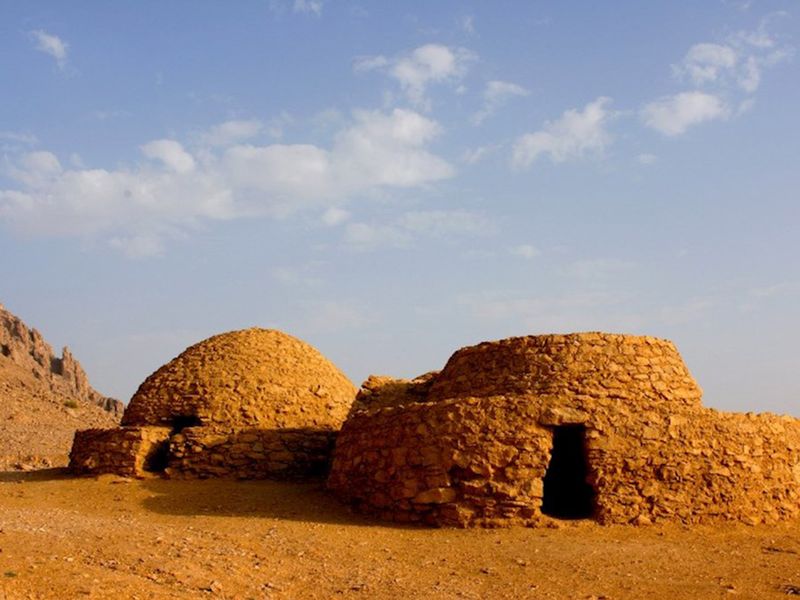
Why you should visit: The remains of an ancient cemetery were discovered a decade ago in the northern and eastern foothills of the mountain that date back to 3000 BC. The finds in this area show that the cemetery belonged to a community that lived in the region. Drive down there and you will find 500 ancient graves, in different dome-shaped tombs, that lie at the bottom of Jebel Hafeet. A little bit eerie but very cool and interesting to add to your UAE bucket list.
Location: Abu Dhabi, 24.045135, 55.799815
Cost: Free
If you love Beaches and Mangroves
Umm Al Quwain Beach
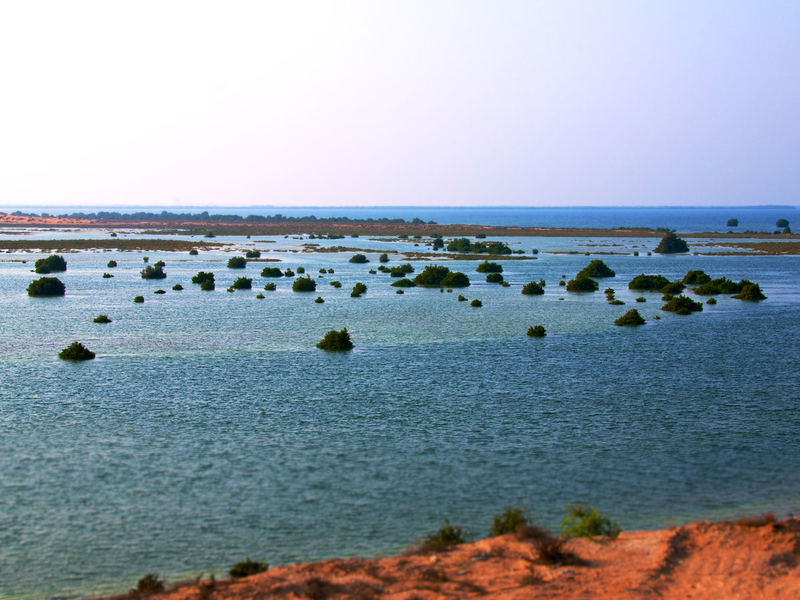
Image Credit: Wikimedia
Why you should visit: If it’s the simple life you crave, then you can’t go wrong with a beach camp in Umm Al Quwain, which is a mere 45-minute ride from Dubai. The Al Rafah area offers the ideal beach for families planning a little swim and sleep by the sea. For more fun, you could also visit the old fishing villages along the peninsula at Al Raas where you may spot flamingos and other wild birds. Some adventure seekers even go as far as exploring the mangroves along the coast on a kayak.
Where: Umm Al Quwain, 25.545877137630406, 55.535605820615885
Cost: Free
Dibba

Image Credit: Yunus Anies/Gulf News reader
Why you should visit: Fujairah’s golden beaches on the UAE East Coast are definitely a must on the tourist map. The coral reefs off the Fujairah coast are ideal dive sites for those who don’t have the time to head up to Oman’s Musandam coast. Clownfish, sharks and even dolphins come out to play on a good day. While the beaches of Fujairah turn into campgrounds by night, those looking for a bit of privacy may prefer heading into the mountains to set up camp. The area around the hot springs offer some comfortable ground, and so do the wadis. But check the weather conditions for flash flood warnings.
Location: Fujairah, 25.60714349451848, 56.30866284109902
Cost: Free
Snoopy Island
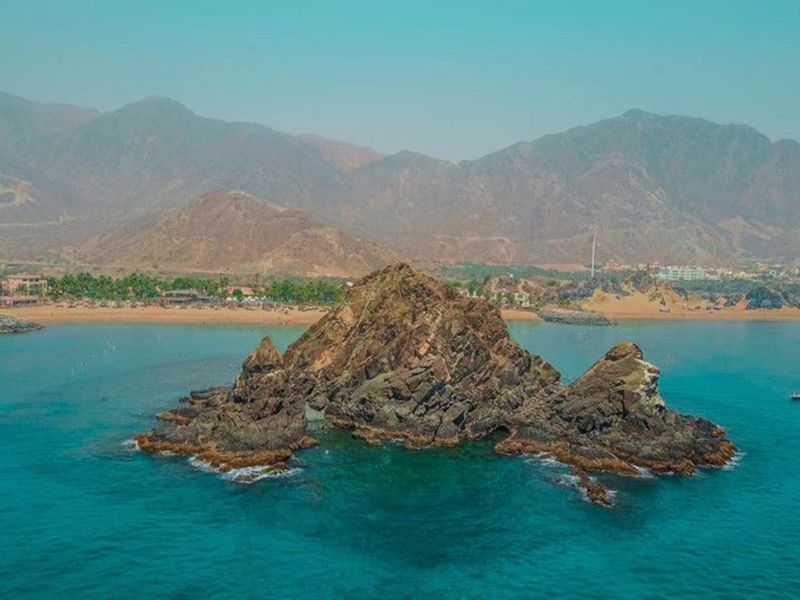
Why you should visit: The island is named Snoopy Island because it resembles the popular character when he sleeps on top of his dog house. It is a beautiful spot for diving, snorkelling and water sports. You can see coral reefs and shipwrecks when you are diving. You can also see turtles and a wide range of fishes.
Location: Fujairah, 25.492725122358156, 56.3641237453178
Cost: Free
The Ajman Pearl
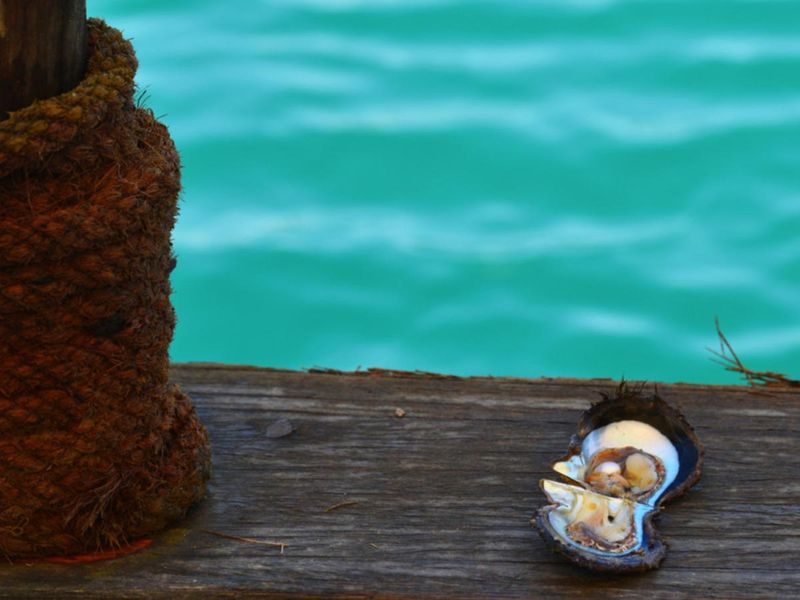
Why you should visit: The experience of pearl diving, a centuries-old tradition of Emirati culture, is now available in Ajman for citizens, residents and tourists. Step aboard the Jalboot and plunge into a tradition that has withstood the test of time for nearly 7,000 years according to historic records. The Ajman Pearl takes the curious and the adventurous on a sailing expedition, where Arabian hospitality and traditions are brought to the fore. As you sail past the mangroves, a nature guide takes you through the history of the UAE’s courtship with pearl diving, before an oyster-opening demonstration. You also have the opportunity to cut open an oyster yourself and keep the pearl nestled within.
Location: Ajman
Cost: Three tour packages are available for Dh150, Dh350 and Dh450, depending on the number of people attending and duration of the tour.
Al Zorah Mangroves

Al Zorah Mangroves and Lagoon
Why you should visit: The species of mangrove found in Al Zorah is called the Avicennia marina, commonly known as the grey or white mangrove, we are told. The trees grow to a height of three to 10 metres and eventually becomes a home for a large variety of rare or migratory birds — close to 58 different species inhabit this ecosystem. Due to the nature reserve’s strict diktat towards sustaining the ecosystem, tours aboard the kayak are limited from venturing into the waters that are considered a safe zone by the majestic birds. While you can have a pick between embarking on this tour during low or high tide, we would recommend the hour close to sunset that gives the landscape an almost surreal appeal. Mangrove tours are priced at Dh150 for adults and Dh130 for children under 12 years. Each trip, including safety instructions, lasts two hours.
If the kayaking experience appears a bit tame for thrill-seekers, then the wakeboarding challenge turns things up a notch — or three. For those not in the know, the sport is a lot like water skiing, with the only difference being the skis are replaced with a board. However, the Wake Park lagoon at Al Zorah sees the boys and girls at Quest for Adventure employ a cable pulley system to make things a little more user-friendly and controlled and to allow novice wakeboarders to ease into the sport. Don’t think wakeboarding is quite what you bargained for? Stand-up paddleboarding is another fun activity that allows you to get your feet wet — figuratively and literally — as you paddle across the lagoon balancing yourself on a surfboard while watching the majestic flamingoes in the distance. Wakeboarding lessons start at Dh100.
Location: Ajman, 25.437377777610156, 55.46527834093501
Cost: Starting from Dh100 onwards
Umm Al Quwain Wetlands
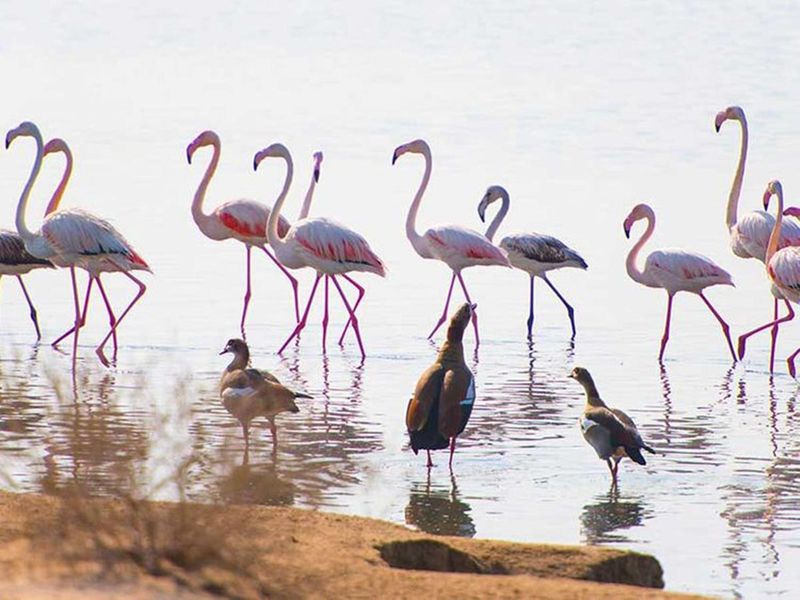
Why you should visit: The emirate of Umm al-Quwain is one of the best indicators of how the UAE used to look like. It has been built nearby a prominent and bright blue lagoon, surrounded by little islands. These islands are perfect locations for bird watchers and all around nature enthusiasts. The wetlands are perfect to explore by boat or by kayak especially the mangroves and the water channels between the islands.
Location: Umm Al Quwain, 25.528475555581952, 55.582052283027096
Cost: Free
Khor Al Beidah
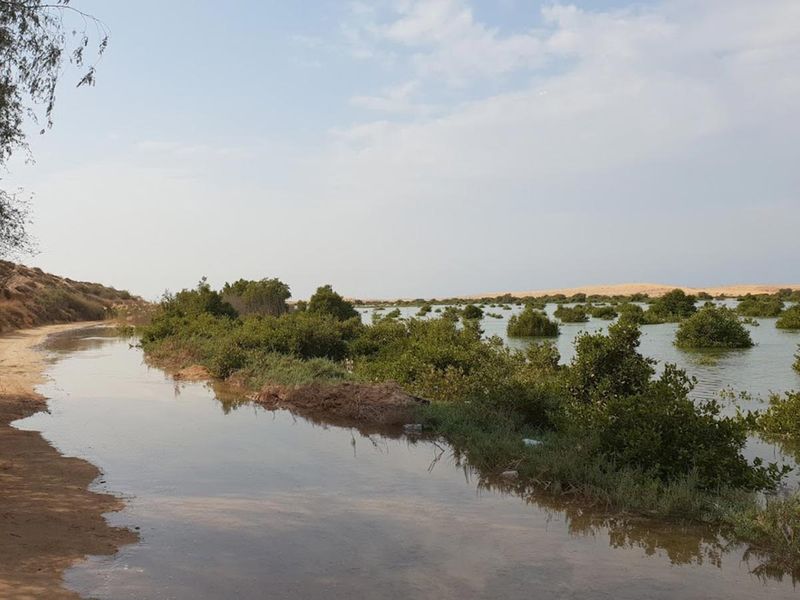
Why you should visit: This is a super popular spot for wildlife and for bird watching. Located on the Al Sinniyah Island, the largest of the Um al Quwain islands, which is a marine life preserve as big as 90 square kilometres. If bird watching is your thing, the best time to visit would be in between November and March, which means that great bird species will be coming in. the Island’s shallow lagoons and mud areas make the perfect habitat for feeding and nesting for many birds.
Location: Um Al Quwain, Al Sinniyah Island, 25.604785255466783, 55.62730569969489
Cost: Free
Wasit Nature Reserves
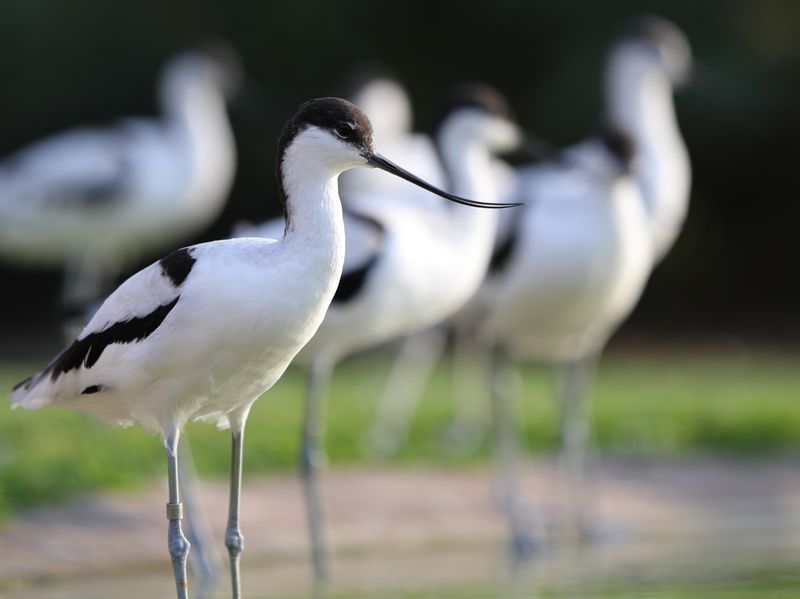
Why you should visit: A 4.5 square kilometre area that has previously been used for dumping trash, has now been converted into a beautiful nature reserve, with birds flocking from around the world. The Wasit Nature Reserve located on the Sharjah-Ajman border, was declared a protected area in 2007 by His Highness Dr Shaikh Sultan Bin Mohammad Al Qasimi, Supreme Council Member and Ruler of Sharjah. It’s a flourishing area that allows visitors to have a closer look at rare birds and other wetland species. The nature reserve houses four natural lagoons attracting around 150 species of birds, both migratory and resident, throughout the year. The water bodies are supported by underground water channels flowing out of Hatta Mountain and Al Falaj areas.
Location: Sharjah, 25.36155789844619, 55.47157384603281
Cost: Free
Wathba Wetland Reserve
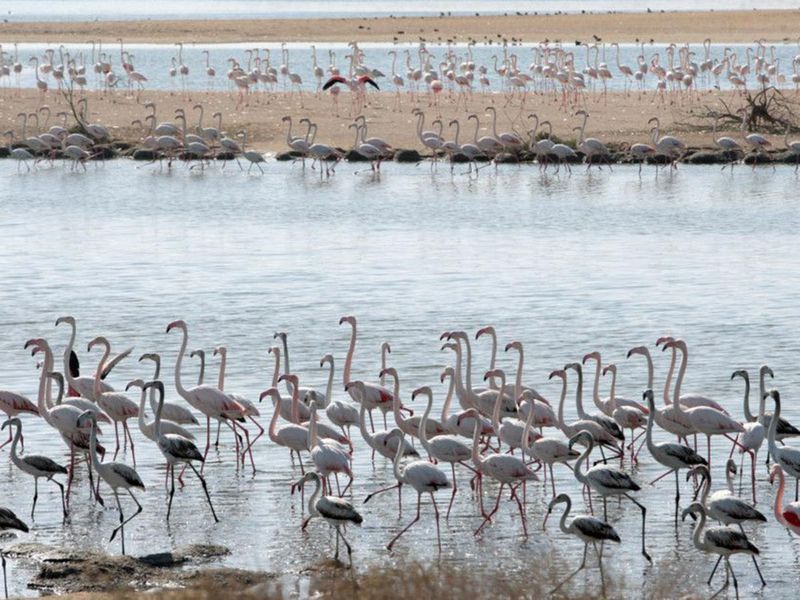
Why you should visit: Located on the edge of Baniyas, this natural reserve is situated in an off the beat, blink and you’ll miss it, location. The wetland reserve is also known as Flamingo City and is totally worth finding if you want to experience a whole other side of the UAE. It is one of the few undisturbed wildlife areas in the country and is also very remarkable and known for being home to hundreds of flamingos, which you’ll be able to watch from a designated hide. The area is also beautiful for when you simply just want to take a long walk through proper woodlands and shrubbery. It will feel like a well needed escape from the usual bustling city life.
Location: Abu Dhabi, 24.255283041401487, 54.61031006176562
Cost: Free
Dalma Island

Why should you visit: If you are looking to see dolphins at play in the distant horizon, with remarkable sunsets, pristine white beaches and the cool night breeze bringing that much-needed sense of calm to your days, Dalma Island is the perfect spot to visit in the UAE. For the adventure seekers, there are hiking trails to explore the volcanic heritage of this island retreat. And if time permits, do visit the museum and neighbouring archaeological sites. Situated off the coast of Abu Dhabi mainland and a short while from the Saudi Arabian border, Dalma Island can be reached by a ferry from the port of Jebel Dhana, Al Dhafra, which transports people and cars. The ferry itself takes 1.5 hours to reach the island. Pro tip: do head up deck when approaching the island to catch the dolphins. According to the official Dalma Island website, non-scheduled flights also take off from Abu Dhabi International Airport. Timings can change so call ahead.
Location: Abu Dhabi, 24.5010° N, 52.3081° E
Cost: It costs Dh20 on a one way ferry for those over the age of 12 years. A vehicle costs Dh100 to ferry.
Moon Island
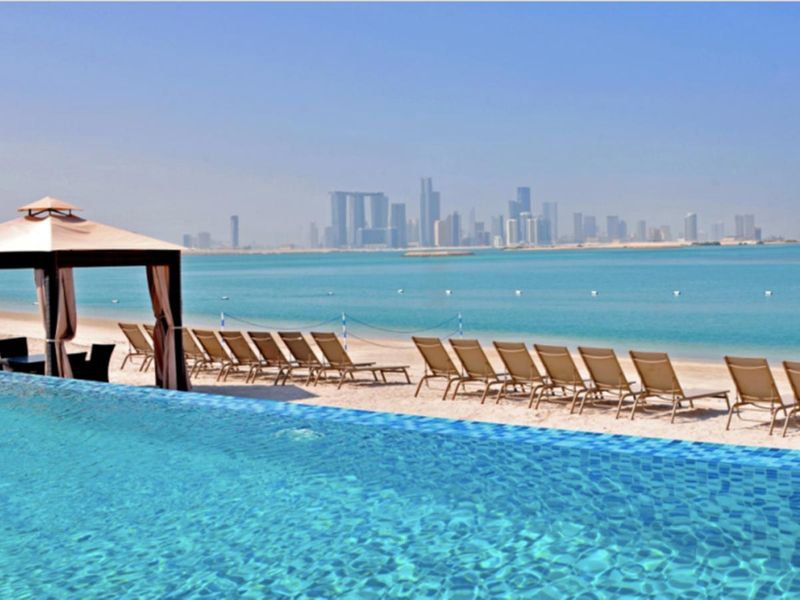
Why you should visit: Not to be confused by its namesake resort in Abu Dhabi, the uninhabited island gets it’s name due to its crescent-moon shape. The waters surrounding the island reportedly offers great snorkeling and diving opportunities for enthusiasts. Some tour companies also offer day trips and overnight camping.
Location: Abu Dhabi, 25.3058° N, 54.6562° E
Cost: Varies depending on company hired, but average price for a roundtrip is Dh950
Sir Bani Yas Island
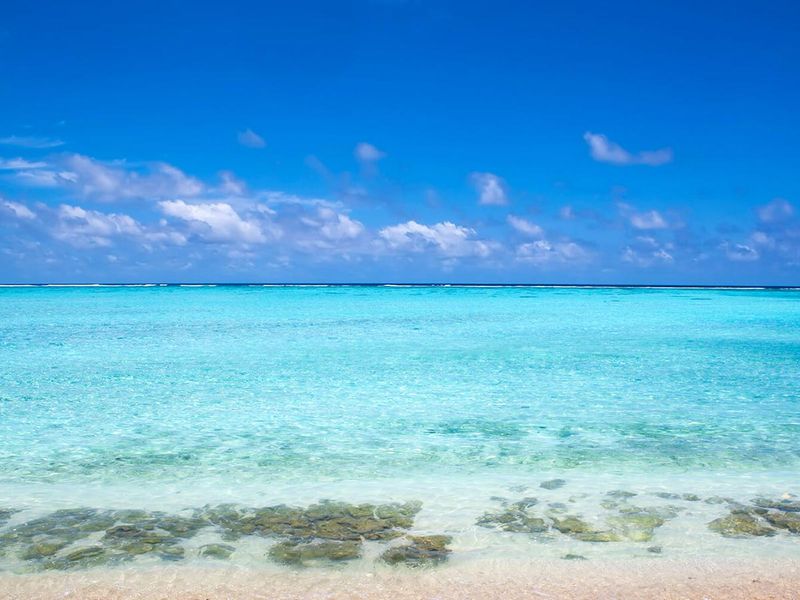
Why you should visit: Located 170kms southwest of the capital Abu Dhabi, the island reserve serves up a wildlife adventure in a rustic setting without having to travel thousands of miles. Three distinct resorts promise a luxurious stay, including the Anantara Hotels and Resorts’ Desert Islands Resort & Spa, Al Sahel Villa Resort and Al Yamm Villa Resort. Even as pristine white beaches set the mood for a perfect getaway, what’s a wildlife reserve without stunning creatures roaming the wild? Adventure enthusiasts can also take in a bout of kayaking, hiking and find time to visit a bird sanctuary there as well. Travel to the island can be via a boat from Jebel Dhanna or by plane.
Location: Abu Dhabi, 24.3333, 52.6000.
Cost: Hotel guests get a complimentary boat ride from the Sir Bani Yas Island jetty. Flight cost varies.
Zaya Nurai Island

Why you should visit: Another island getaway off the shores of mainland Abu Dhabi and a short 15-minute boat ride, the archipelago boasts a boutique private island resort with a spa,, a beachclub and several dining outlets. The resort is also a hotspot for several Bollywood films that have been filmed there, including ‘Dishoom’, starring John Abraham and Varun Dhawan.
Location: Abu Dhabi, 24° 36.880′, 54° 28.567′
Cost: Starting at Dh4,000 for a one-night stay at the resort
Jubail Mangrove Park
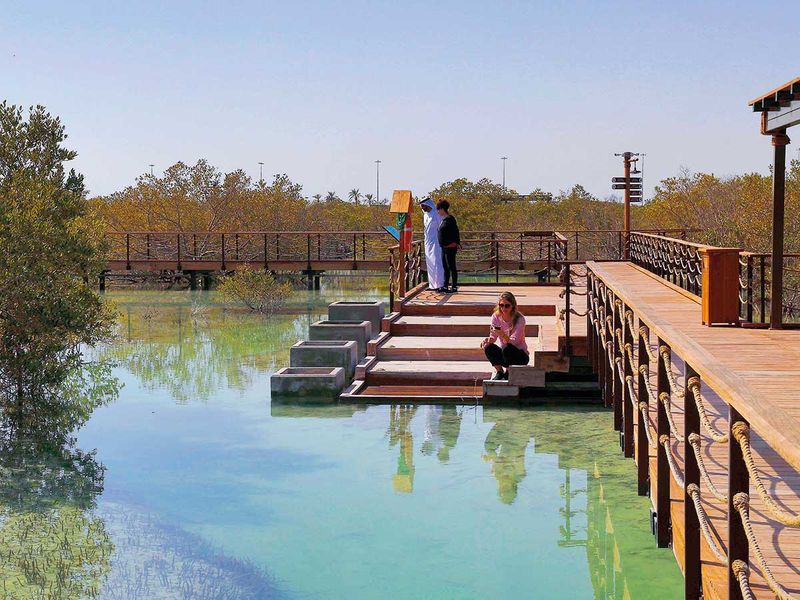
Image Credit: Clint Egbert/Gulf News
Why you should visit: The mangrove park is the first self-contained educational, nature and leisure destination of its kind in the Emirate of Abu Dhabi. Here, you can visit and explore a haven of marine species native to Abu Dhabi. It is mainly a mangrove sanctuary. A meandering boardwalk will take you through the mangroves and allows you to discover Abu Dhabi in its essence.
Location: Abu Dhabi, 24.545416707513986, 54.4853953691829
Cost: Tickets start from Dh10
Eastern Mangrove Lagoon
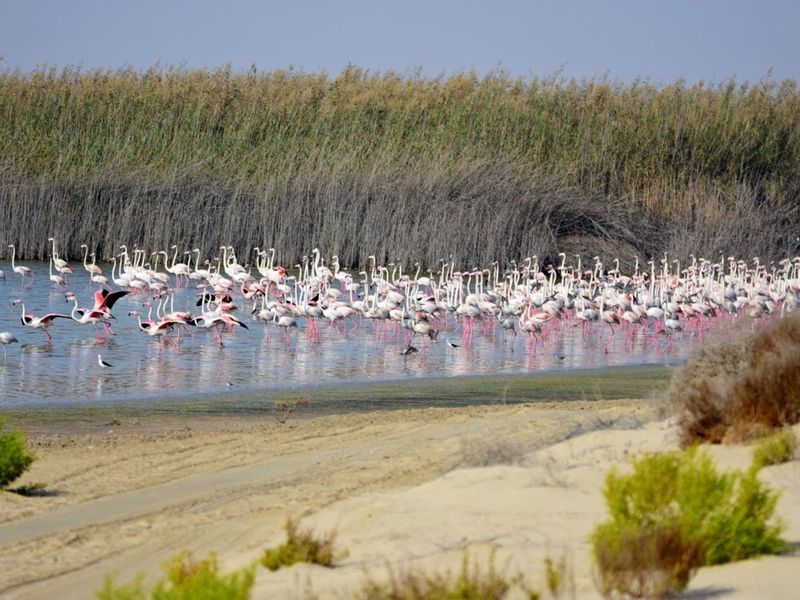
The Eastern Mangrove Lagoon National Park is one of five national parks that are to be protected and developed as laid down in Plan Abu Dhabi 2030, a government initiative aimed at increasing Abu Dhabi’s global reputation. This mangrove forest in the Eastern Mangrove Lagoon National Park is the closest to Abu Dhabi city, stretching for about eight kilometres just off Eastern Ring Road. Unbeknown to the average kayaker, there’s an entire fragile ecosystem out there carrying out a terrific balancing act. It consists of mangrove forest, salt marsh and mudflats, and the water supports sponges, worms, crustaceans, molluscs and algae, on which crabs, turtles, marine birds and fish rely. The water is, in essence, a fish nursery, for it varies from extremely shallow to seven metres deep.
Location: Abu Dhabi,
Cost: Two-hour kayak tour costs approximately Dh160
Al Qudra Lakes
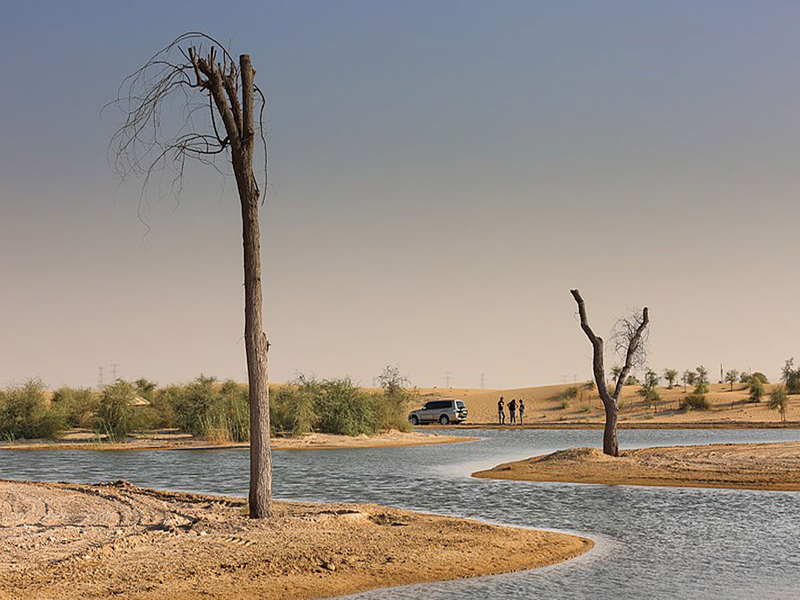
Image Credit: Wikimedia
Why you should visit: The benefit of Al Qudra is its proximity to the city. It is a man-made desert oasis built to promote eco-tourism in Dubai. It is made up by several artificial lakes, surrounded by dunes and desert greenery. The Al Qudra lakes are spread over 10 hectares in the middle of the Saih Al Salam Desert. The man-made Lake is supplied with water by the Jebel Ali sewage treatment plant of Dubai Municipality, thus has created a natural habitat of rare breeds of birds, fish and other smaller animals. Get in touch with nature in this free to enter area and have a picnic with friends and family. Most importantly, do not forget to clean up after yourself.
Location: Dubai, 24.840985176226603, 55.34999087591619
Cost: Free
Love Lake
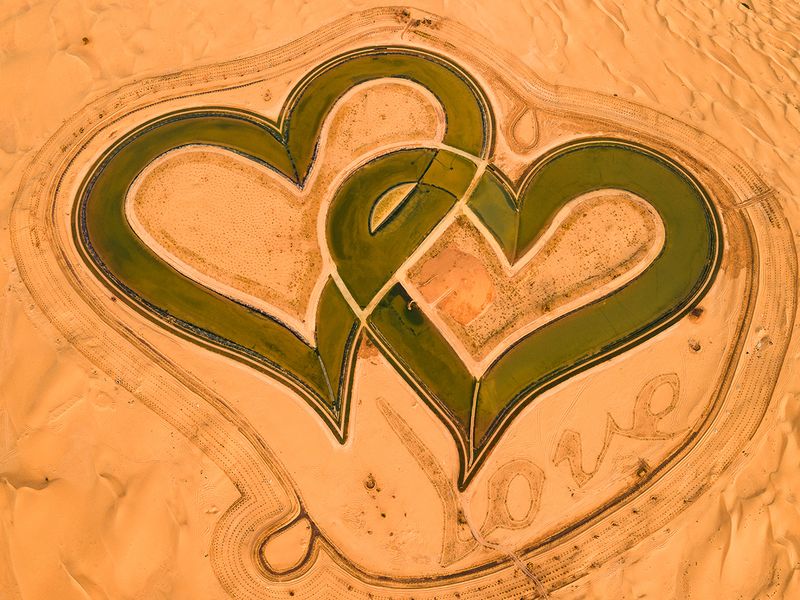
Image Credit: Ghader Shaar/Gulf News reader
Why you should visit: This man-made lake is n the form of two hearts entwined together. And what’s more, it’s even visible from space. The “Love Lake” has been carved out next to the man-made cluster of lagoons in Al Qudra, about 50 kilometres from the centre of Dubai. It’s big enough to be seen on Google Map’s satellite imagery or Google Earth. Shaikh Hamdan Bin Mohammad Bin Rashid Al Maktoum, Dubai Crown Prince and Chairman of Dubai Executive Council, was the first to post about it. Since then it has been an attraction to many visitors and photographers. There’s lots of other heart-shaped things there including twigs formed together to make hearts and lots of swans swimming about.
Location: Dubai, 24.838894974558272, 55.40443540913923
Cost: Free
The Lake of Expo
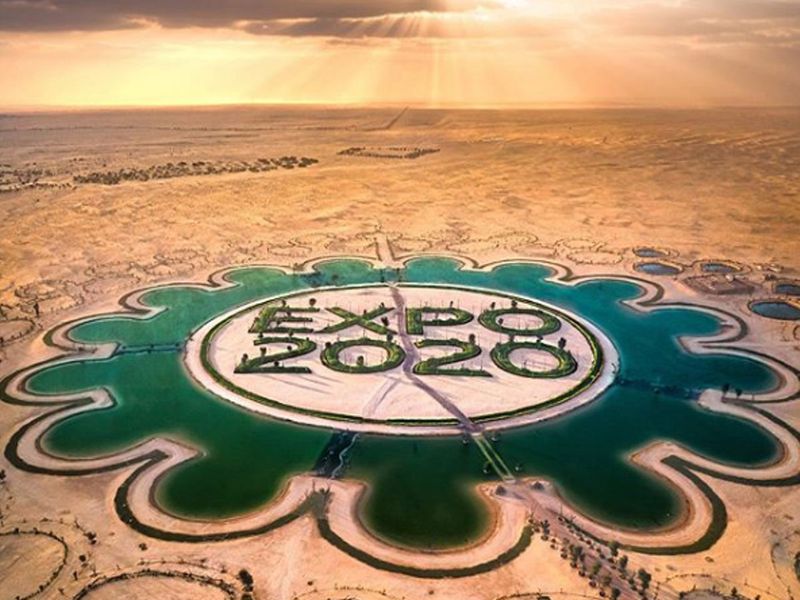
Why you should visit: Located over an hour drive away from the Expo2020 site is a manmade lake called “The Lake of Expo.” People of Dubai came to know of the lake when a photo of it popped up on Instagram. The site of the lake is currently open to the public and it’s easy to access. It’s near Bab Al Shams Hotel, beyond the Al Maktoum Airport. Gulf News also learned that the lake was not a project built by Expo 2020 Dubai. Dubai Municipality are allegedly behind the special project and have designed it for the upcoming mega event.
Location: Dubai, 24.853738, 55.248163
Cost: Free
Al Noor Island
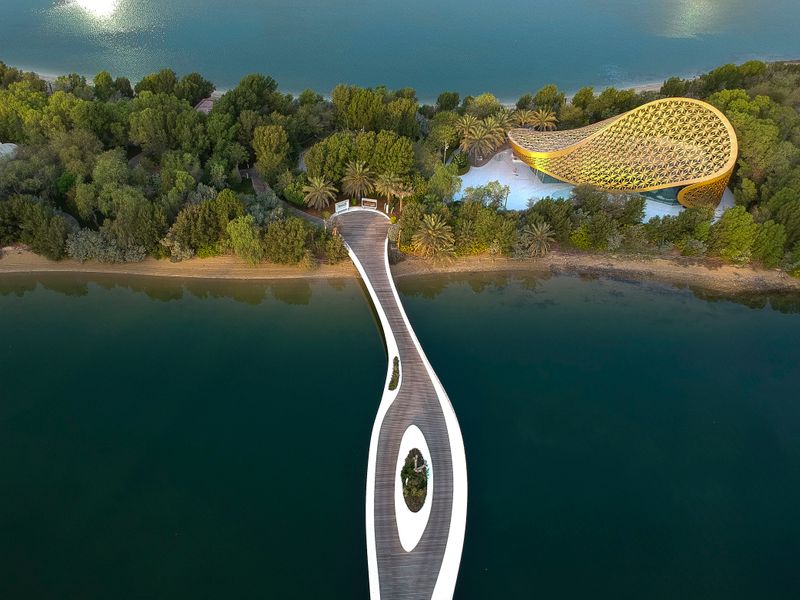
Image Credit: Ahmed Ramzan
Al Noor Island, Sharjah’s most unique leisure attraction, is a bastion of exotic trees, prehistoric rocks, a Butterfly House and other features. The small island in Khalid Lagoon is connected to Buhairah Corniche by a footbridge near Al Noor mosque and has wooden walkways for visitors. Inside the island, the centrepiece is a Butterfly House that houses 500 exotic East Asians butterflies, donated by Dr Shaikh Sultan. The trees, some of them oddly shaped, have been imported from other countries, including a 250-year-old olive tree from Spain. There are also 300 million-year-old crystal rocks and art sculptures installed at various points. There is also a play area for children and a Literate Pavilion where visitors can relax. A cafeteria is also available within the Butterfly House.
Location: Sharjah, 25.337935428449704, 55.385367642802095
Cost: Dh35 for Adults, Dh20 for kids
Deserts
Bidayer a.k.a Big Red Desert
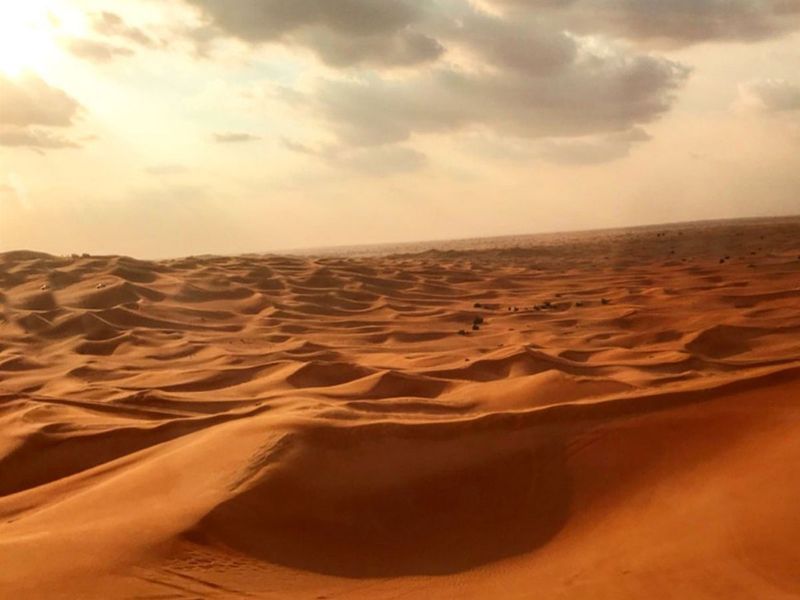
Why you should visit: Big Red is located just at the border between Sharjah and Dubai, via Hatta Road (E44). It is a magnificent open dessert that’s open and accessible to everyone. You’ll notice that the further you drive away from the city, the deeper the red colour of the dessert becomes. Then you’ll get to Big Red, a pretty popular spot for bashing dunes, but a beautiful and picturesque desert away from the hustle of Dubai. This is one of the most popular dune bashing sites in the UAE. This spot is always filled with those looking for an adrenaline rush. This desert has the easiest dunes that can be manoeuvred by both amateurs and professionals. On weekends and holidays, the area is swarming with motorists looking to show off the latest tricks in motorbikes, buggies, quad bikes and jeeps.
Location: Dubai, 24.969919230283388, 55.72327668101903
Cost: Free
Liwa Desert a.k.a Rub Al Khali
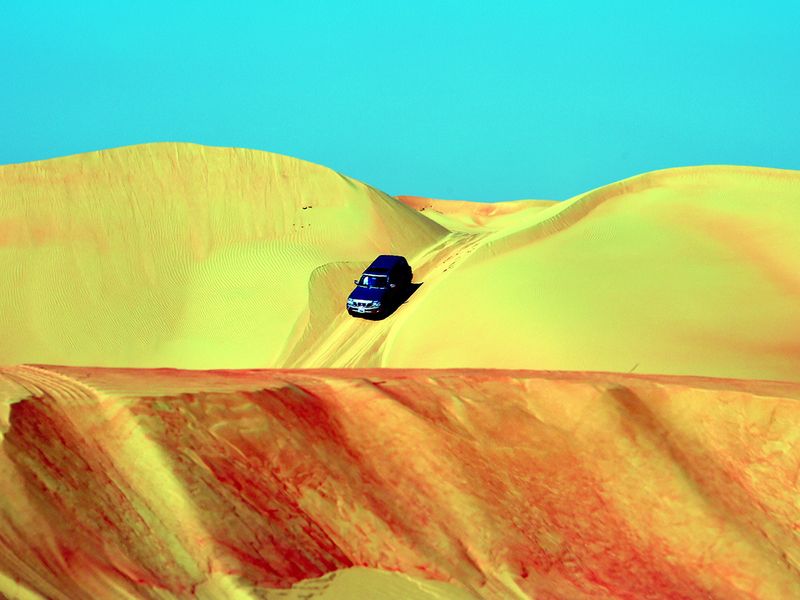
Why you should visit: Also known as “The Empty Quarter” only the very experienced dune-bashers go here. Liwa desert is known for the festivals and challenges that are conducted annually. Bordering Saudi Arabia, Oman and Yemen, myths and folklore narrate the story of an ancient city that once resided in the middle of the Rub Al Khali, but it was lost to the sands of time and till date, no one has been able to locate the ruins. It is the largest desert in the Arabian Peninsula. Spread over a wide area, with very soft sand, Liwa desert shares its border with Saudi Arabia. Stretching beyond the Abu Dhabi’s lush Liwa Oasis, with the Moreeb dune — the tallest in the UAE — a feat to behold. But novice drivers beware, it is easy to lose one’s way in the Rub Al Khali, hence it’s advisable to go as part of a convoy or with an expert guide. The desert offers a welcome blanket to set up camp but striking out solo deep into the Rub Al Khali should be avoided. While there, do take time to explore the town of Liwa, one of the few places that offers a brief glimpse into the origins of the country and its historical heritage.
Location: Abu Dhabi, 22.848392331340335, 53.98949205387927
Cost: Free
Buried Village of Al Madam
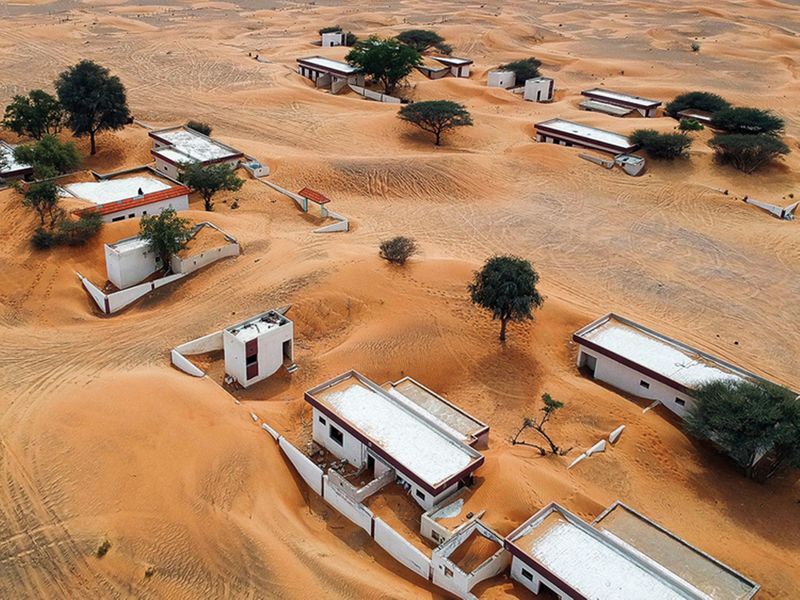
Why you should visit: Al Madam is an abandoned village, dating a few decades back. The village now lies half-buried in sand, and nobody is exactly sure why. Located just on the edge of the Dubai border, it is worth the trip, just so you can see how the houses have been engulfed by the desert. Affectionately known as the “Madam Ghost Town” this area was built in the 70s, as part of a housing project. You will notice that all of the houses are the same. The village is made up of just two rows of identical houses and a mosque in the far corner. he village, according to locals, was once inhabited by Al Kutbi tribe, one of the three prominent tribes residing in and around Al Madam, a small town governed by Sharjah emirate. The local legend goes that jinns were the reason for the villager’s departure of the area. Jinns are supernatural creatures that Muslims believe exist in this world but not visible to human eyes.
Location: Sharjah, 24.894612, 55.763894
Cost: Free
Al Faya Desert
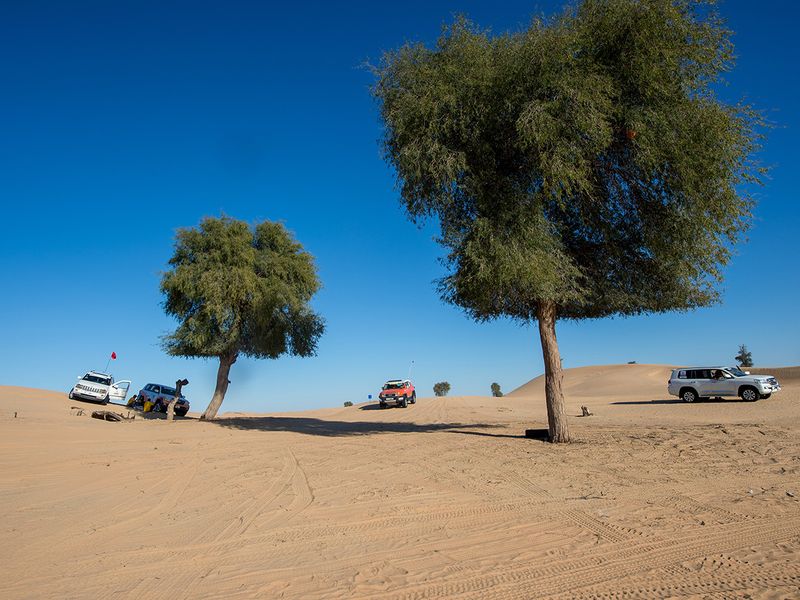
Why you should visit: Riding along the Sharjah-Kalba Road, towards the east-coast exclaves, will lead you to a spectacular desert of ruby sand: Al Faya Desert. Both amateurs and skilled drivers favour it due to its dunes, which are bigger than Al Bidayer. As a matter of fact, the popular opinion is that one can find the biggest dunes to ride down here, and hence is known under the name “Big Fall” also. This is a popular tourist spot to set up camp under the stars.
Location: Sharjah, 24.300305395033043, 54.9669999886588
Cost: Free
Lahbab Desert
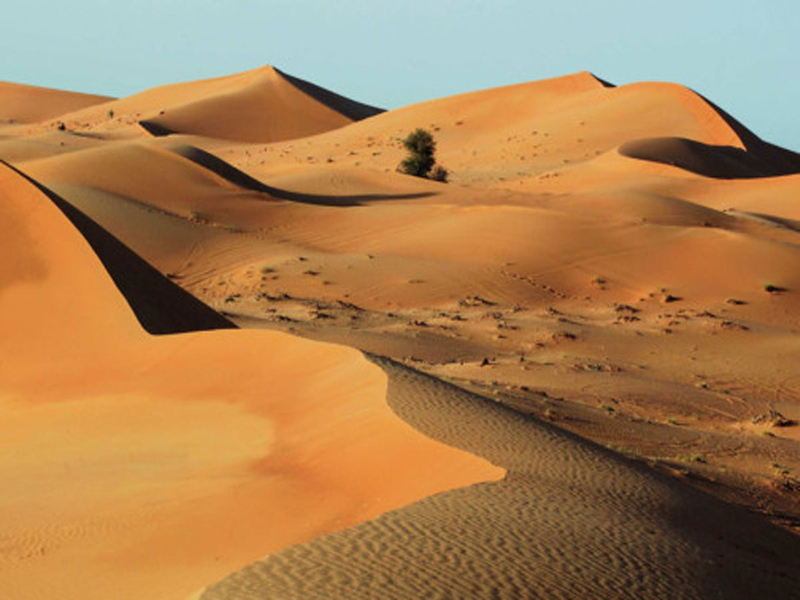
Image Credit: GN
Why you should visit: Known for its spectacular red sands, Lahbab is a popular night-time haunt for new campers. Many start off close to the familiar Fossil Rock that’s also a great place for stargazing. A barbecue in this weather is the best thing to do while attempting the ‘Big Red’, a 300-foot high sand dune, is a dune basher’s delight. You could also head over to the sleepy village of Madam just before the Hatta border crossing for more camping spots where you may have some wandering camels from local farms for company.
Location: Dubai, 25.050124501814, 55.59266294671861
Cost: Free
Sweihan
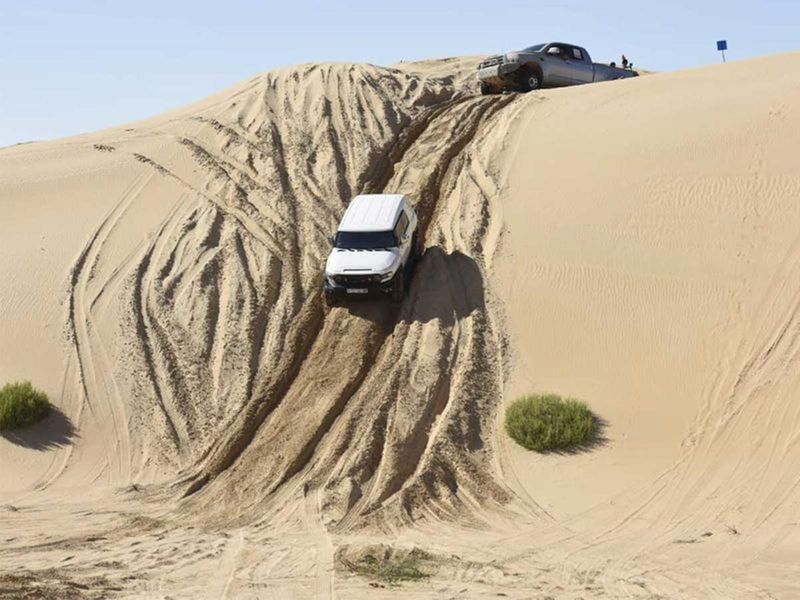
Why you should visit: Located in Abu Dhabi, it is on the border of three cities: Abu Dhabi, Dubai and Al Ain. Sweihan is known as “Little Liwa”, since it is the practising ground of Liwa enthusiasts. Sweihan is different than the other deserts and is only advised for experienced drivers, due to its big dunes and soft sands. With proper guiding and GPS, one can see an abundance of camels and lone Emiratis with their falcons here. Naqrah is a sand dune located deep in the Sweihan desert, which needs to be tried at least once by dune bashing buffs.
Location: Abu Dhabi, 24.399723724671137, 55.28281904885302
Cost: Free
Al Khaznah
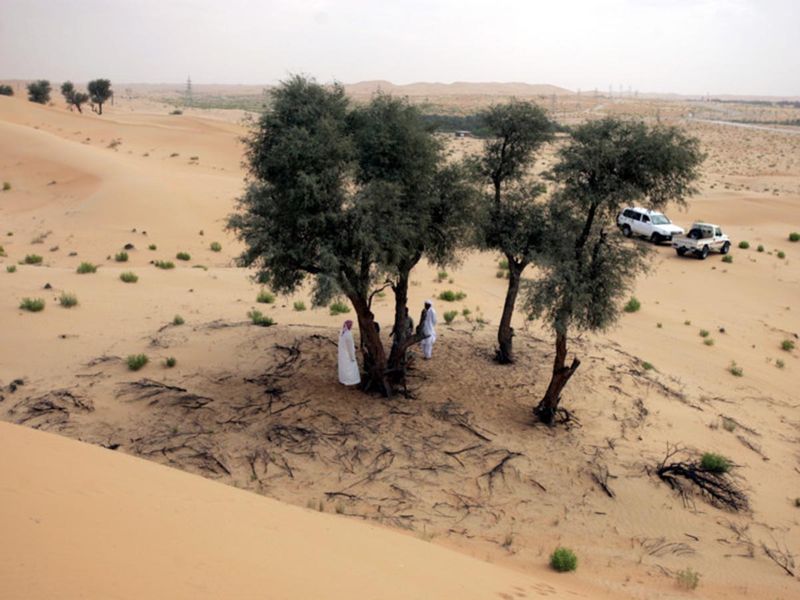
Why you should visit: The desert stretch between Al Ain and Abu Dhabi is an off-roader’s delight, promising an unwavering desert vista that’s usually devoid of too many vehicles. Although, it is advisable to have a convoy of two to three vehicles if you happen to be a novice off-roader. Also, pack warm clothes as the temperatures are known to dip at night, bringing on some serious chills. Al Khaznah is also on the route of many desert safaris and camps in case the solo trip isn’t too appealing.
Location: Abu Dhabi, N24°26.004, E54°49.579
Cost: Free
Al Hayer Forest

Image Credit: Antonin Kelian Kallouche/Gulf Ne
Why you should visit: Often overlooked by some of the more popular spots around the UAE, this gem on the Dubai-Al Ain stretch that offers a green patch and easy maneuvering for those who want to stay close to the highway but yet experience the desert adventure. The green patch is a delight to camp at after the rains, but beware of critters that call this place home.
Location: Abu Dhabi, 55.800970, 24.741969
Cost: Free
Museums, Historical Forts and more
Jazirat Al Hamra: The “Ghost town” of Ras Al Khaimah

Why you should visit: Jazirat Al Hamra (Red Island) is a former fishing village in Ras Al Khaimah that has been abandoned over 50 years ago, before the discovery of oil. The town was occupied since the 16th century and was home to hundreds of villagers. This abandoned village is of great interest to tourists and photographers. Many speculate that the town was abandoned because of Jinns, while others say that it was a rush to modernize that made people leave and start afresh. Eight years ago the island underwent a rigorous clean-up drive and a restoration programme as part of protecting its natural and historical identity. Jazirat Al Hamra is one of the last authentic traditional towns still standing in the UAE. Once a small island, but now a long and narrow peninsula.
Location: Ras Al Khaimah, 25.707695, 55.792720
Cost: Free
Al Ahmadiya School and Heritage House
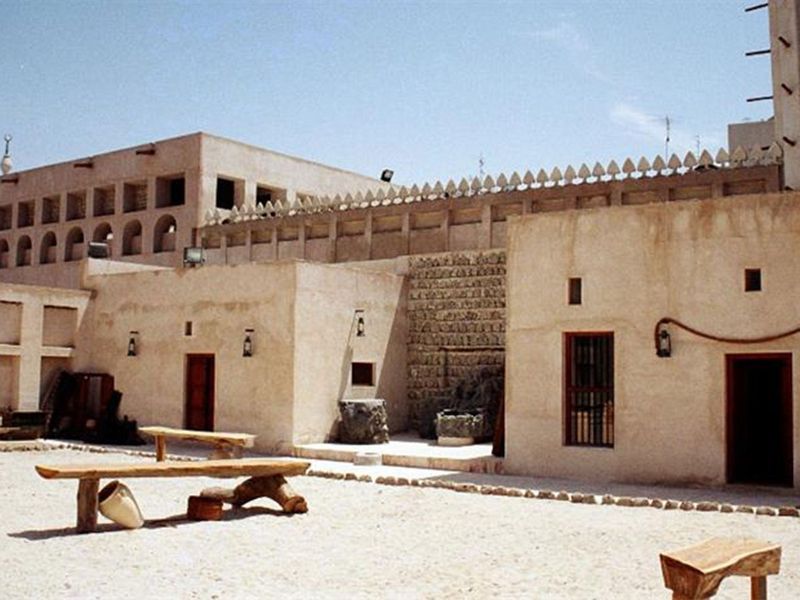
Why you should visit: The Al Ahmadiya School that was established in 1912 and remained active until 1962. It is located in Al Ras area of Dubai, this museum can be explored in a few hours. This heritage site belongs to wealthy pearl merchant, Shaikh Ahmad Bin Dalmouk, and exhibits life-size creations of the country in the 1970s. It’s worth taking a look round to get an idea of what education used to be like before the introduction of a foreign curriculum. It was the first regular school in Dubai, which was attended by famous pupils including the father of Dubai – Shaikh Rashid Bin Saeed Al Maktoum. Built around a large courtyard the school is a beauty complete with scalloped archways with intricate details.
Location: Dubai, Al Ahmadiya Street in Deira, near Al Ras metro station, behind Dubai Public Libraries
Cost: Free
Timings: Sunday to Thursday from 8am to 7.30pm, Friday from 2.30pm to 7.30pm
Dubai Museum
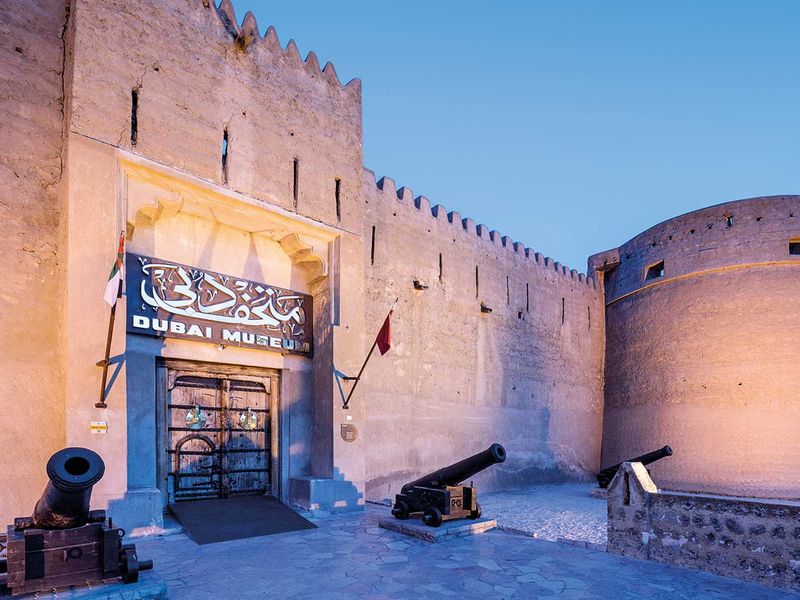
Why you should visit: Opened in Dubai in 1971, the Dubai Museum aims to showcase the traditional Bedouin way of life. Located within Al Fahidi Fort, which was built in 1787, the Dubai museum housed life-size dioramas of the pre-oil era, several galleries with old maps and historical finds as old as 3000 BC. It also has a video room that shows the development of Dubai from the discovery of oil, up to the present day. The visitors of Dubai Museum’s ‘Al Fahidi Fort’ have an opportunity to get rich, full and integral knowledge of the very old history of Dubai that interacted with different people and civilizations across history. Visitors will get acquainted with the different environments of urban and rural lives in Dubai, whether they are marine, coastal, desert, mountain or agricultural life.
Location: Dubai, Opposite Grand Mosque on Al Fahidi Street
Cost: Dh3 per Adults; Dh1 for children under 12
Timings: Saturday to Thursday from 8.30am to 8.30pm, Friday from 2.30pm to 8.30pm
Dubai Coffee Museum
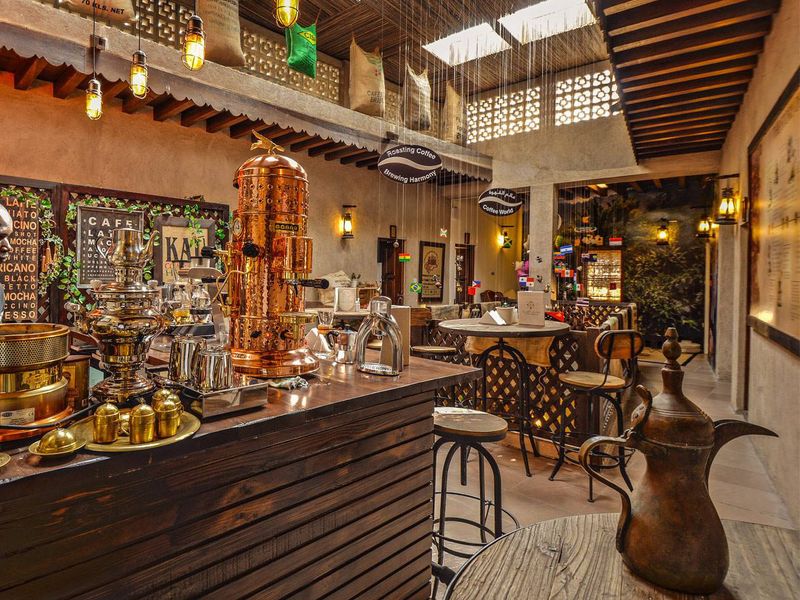
Why you should visit: Located in the Al Fahidi district, Dubai is home to the UAE’s first every museum dedicated to coffee. The museum opened its doors in September 2014 to mark International Coffee Day, which takes place on September 29. The museum is a showcase that connects the past and the present of the coffee world. The ground floor of the museum is made up of 6 different rooms including the different roasting and brewing styles from various countries, which are live demonstrated. The first floor of the museum offers a large selection of books about the history of coffee as well as documentaries that visitors can watch in the media room. Coffee lovers can also sit and enjoy some tasty coffee in their homey and cozy coffee lounge as well as purchase related items from the museum gift shop.
Location: Dubai, Villa 44, Al Fahidi Historical District
Cost: Free
Timings: Daily from 9am to 5pm, closed on Friday
Al Oqaili Museum
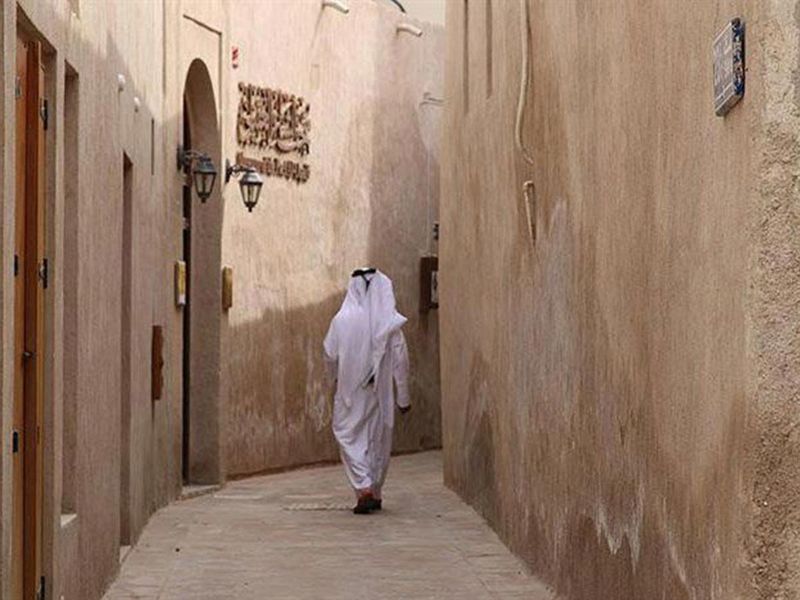
Why you should visit: Built in 1923, this museum used to be the house of Emirati poet Mubarak Al Oqaili. Built on two stories the ground floor contains information on his life, poems and other manuscripts while the second floor displays his cultural and social life. In 2010 the house was renovated using the original building materials and construction techniques to preserve the life and work of one of the great poets of UAE.
Location: Dubai, Bani Yas, near the Spice Souq, Deira
Cost: Free
Timings: Sunday to Thursday 8am to 2pm
Museum of Dalma a.k.a Al Meraikhi House
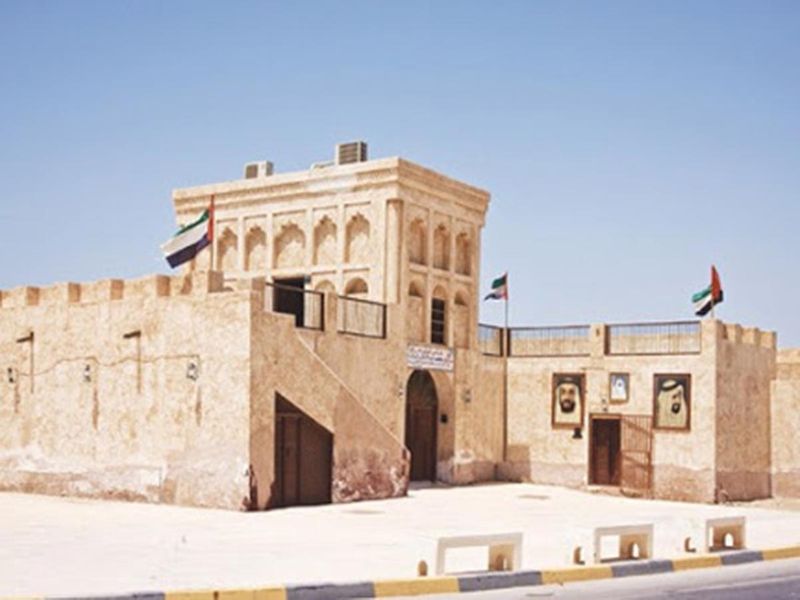
Why you should visit: Dalma Island is home to some of the best preserved buildings from the early 20 century. On the island there’s a small museum, called the Al-Meraikhi Old House, which belonged to the most famous pearl diver in the UAE, the late Mohammed Bin Jassim Al-Meraikhi, who was born in Dalma Island in the year 1870. Getting to Dalma Island takes 1.5 hours by ferry, or is a short flight away.
Location: Abu Dhabi, Dalma Island
Cost: Free
Timings: Saturday to Thursday from 8am to 4pm
Bait Al Naboodah
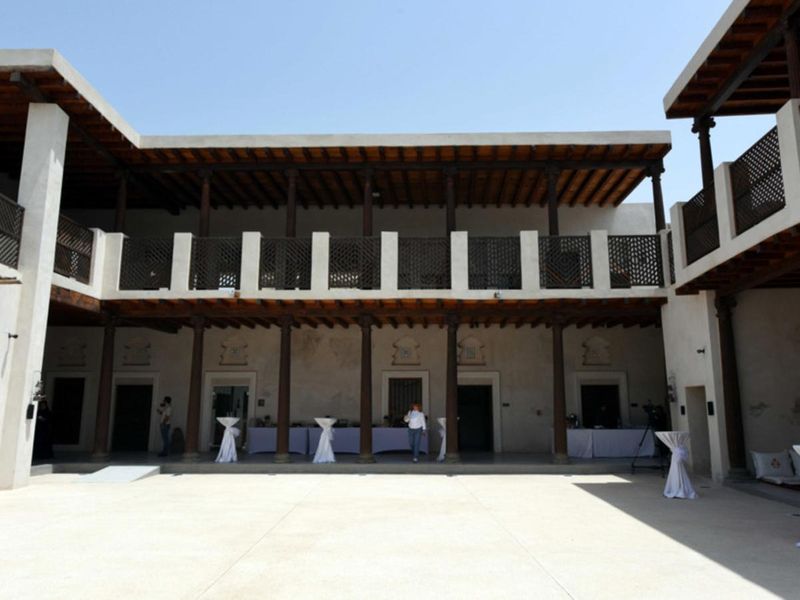
Why you should visit: Bait Al Naboodah was built in the mid-19 century and was established as a museum in 1995. The house initially belonged to Obaid Al Shamsi and his family, he was nicknamed Al Naboodah and was a famous pearl merchant. The museum is a great example of how traditional Emirati houses looked at the time. Touring the museum also allows you to learn about the lifestyle and values of Sharjah’s ancestors. This house is a unique model of the architecture at the time and is made up of two floors and is built using coral. There’s even a water well.
Location: Sharjah, opposite Al Eslah School Museum and Al Arsah Souq
Cost: Dh10 per Adult, Dh5 per child
Timings: Saturday to Thursday from 8am to 8pm, Friday from 4pm to 8pm
Sharjah Natural History Museum and Desert Park

The Natural History Museum and Desert Park was founded in 1997 as a children’s petting zoo. The museum gives visitors a chance to learn about the growth of flora and fauna of the Arabian Desert. People can additionally observe and enjoy the various species of animals that are found on the Arabian Peninsula.
Location: After the Sharjah International Airport at Interchange No. 9
Cost: Dh10 per Adult, Dh5 per child
Timings: Saturday to Wednesday from 9am to 5.30pm, Thursday from 11am to 5.30pm, Friday from 2pm to 5.30pm, museum is closed on Mondays
Fujairah Fort

Why you should visit: The Fujairah Fort, perched high up on a 20-metre rocky hill overlooking the historic town of Fujairah 2km away, served as a symbol of power and refuge for the local inhabitants of Fujairah in the old days. It was where rulers performed their administrative duties, resolving tribal conflicts that were rife during that period. But the fort also served another purpose for the community. Because of its stability and height, it was a fortress for the people seeking protection as they weathered storms back then. Such refuge is critical to the community as Fujairah sits along the coast of the Gulf of Oman, which makes it prone to weather disturbances. The fort was constructed using materials available in the area at that time such as rock, gravel and clay stacked together using lime-based plaster. Radiocarbon analysis estimates that the fort was constructed between 1500 and 1550, according to the Fujairah Tourism and Antiquities Authority. The fort has three circular towers while the fourth one is a square for halls.
Location: Fujairah, 25.138898674013564, 56.337157041606496
Cost: Dh5
Al Bidiya Mosque
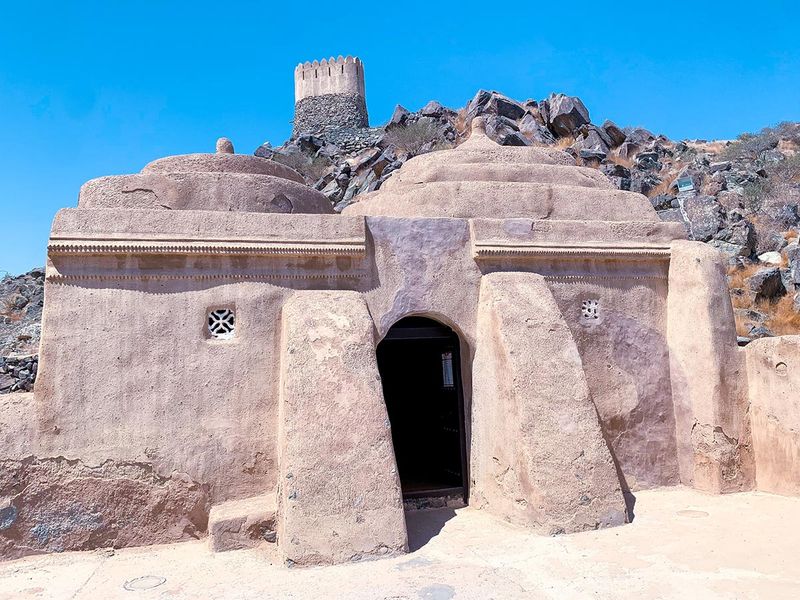
Why you should visit: Al Bidiya Mosque in Fujairah, the UAE’s oldest, was built in the year 1599. That’s 421 years ago. It has unusual architecture (a curvaceous, squat mud-brick structure) and a small space to pray. Al Bidya Mosque is different than other mosques because it has fewer domes than you would typically find in a mosque and tiny little windows. The mosque is accessible to the public and people can still pray in it. It is now air-conditioned and fitted with modern lighting. Definitely worth a visit.
Location: Fujairah, 25.439160, 56.353833
Cost: Free
Al Manama Fort and Museum
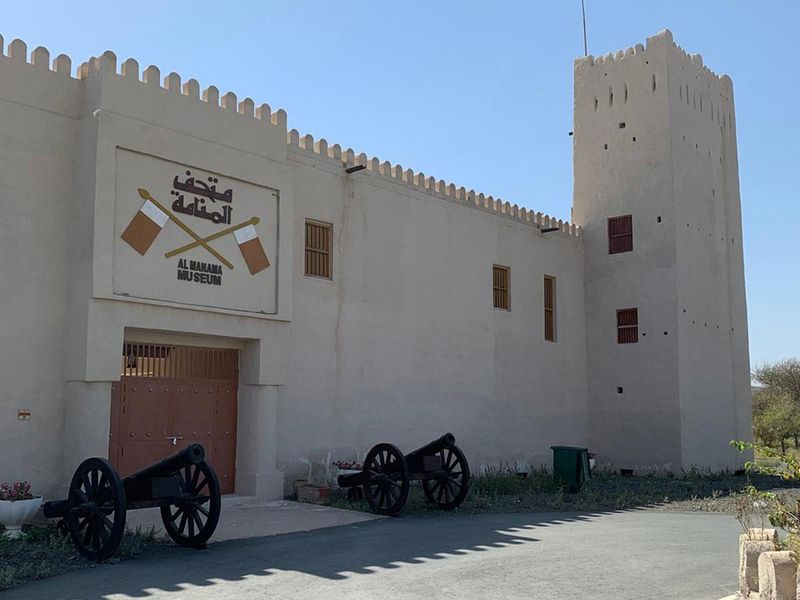
Why you should visit: The fort was built in 1970, where it served as the palace of the ruling family. In 1981 it was converted to a museum. Located in the centre of the city of Ajman, the museum is home to a large collection of archaeological artefacts, manuscripts, old weapons and great reconstructions of the UAE’s traditional life. The fort is Ajman’s only museum.
Location: Ajman, 25.324761437122252, 56.0128477974326
Cost: Dh5 per person
Timings: Saturday to Thursday from 8am to 8pm
Umm al-Quwain Fort and Museum

Why you should visit: The Umm Al Quwain Museum was established back in the year 1768 when it was the home of the Emiri family, in the year 2000 it was became a museum. Most of the pieces displayed in the museum are very valuable and have been brought from the Ed-dour historical site whose history goes back to the Roman Empire.
Location: Umm Al Quwain
Cost: Dh4 per person, free for children under 15
Timings: Saturday to Thursday from 8am to 1pm and 5pm to 8pm, Friday from 5pm to 8pm on
National Museum of Ras Al Khaimah

Why you should visit: The fort was originally built in 1749 and was the residence of the ruling Al Qasimi family until early 1960, when it was converted into a museum. Located behind the RAK Police Headquarters in the old town, the museum is home to a fascinating collection of archaeological artefacts sourced from different sites all over the emirate. The Museum is made up of coral stone, a fossil building material originating from the sea. The artifacts and collections in the museum were mostly donated by members of the Quwasim family, as well as many residents of Ras Al Khaimah.
Location: Ras Al Khaimah
Cost: Dh5 per person
Timings: Wednesday to Monday from 10am to 5pm


